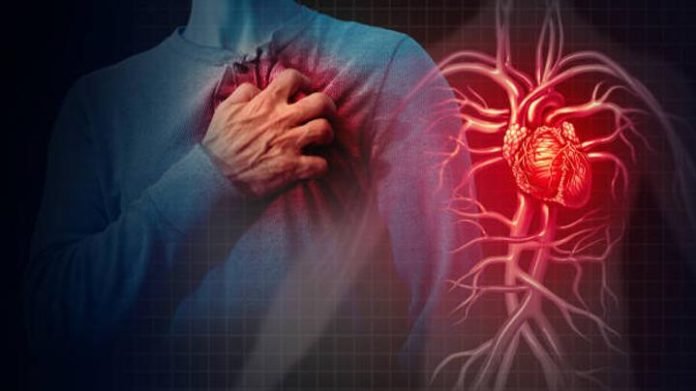
In a world where heart disease remains one of the leading causes of death, knowing how to recognize and respond to a heart attack is crucial. A heart attack, also known as a myocardial infarction, occurs when blood flow to a part of the heart is blocked, leading to damage or death of heart muscle cells. Understanding the symptoms and taking immediate action can make a life-saving difference. In this guide, we’ll explore how to spot the signs of a heart attack and provide essential tips for treatment.
Recognizing the Signs of a Heart Attack
Heart attack symptoms can vary from person to person, and they may not always be sudden or severe. However, it’s important to be aware of the common warning signs, which include:
- Chest Pain or Discomfort:
The most common symptom of a heart attack is chest pain or discomfort that may feel like pressure, tightness, fullness, or squeezing. This pain can last for more than a few minutes or come and go.
- Pain in Other Areas of the Body:
Pain or discomfort may also be felt in the arms (usually the left arm but can also affect the right arm), back, neck, jaw, or stomach.
- Shortness of Breath:
Feeling short of breath or experiencing difficulty breathing can be a sign of a heart attack, especially when it occurs along with chest discomfort.
- Nausea, Indigestion, or Vomiting:
Some people may experience nausea, indigestion, heartburn, or vomiting as symptoms of a heart attack, particularly women.
- Sweating:
Profuse sweating, often described as cold sweats, can occur during a heart attack, even if the person is not exerting themselves.
- Light-headedness or Dizziness:
Feeling light-headed, dizzy, or faint can be a symptom of reduced blood flow to the brain due to a heart problem.
- Extreme Fatigue:
Unexplained fatigue, weakness, or exhaustion, especially when accompanied by other symptoms, can indicate a heart attack.
Taking Action: What to Do If You Suspect a Heart Attack
If you or someone else is experiencing symptoms of a heart attack, it’s essential to act quickly. Here’s what you should do:
- Call Emergency Services Immediately:
Dial emergency services (such as 911 in the United States) or your local emergency number without delay. Time is of the essence when it comes to treating a heart attack.
- Chew and Swallow Aspirin (If Available):
If you have aspirin on hand and are not allergic to it, chew and swallow one full-strength (325 mg) aspirin. Aspirin can help prevent further blood clotting and reduce the severity of a heart attack.
- Stay Calm and Rest:
If you are the one experiencing symptoms, try to stay as calm as possible. Sit or lie down and avoid exerting yourself.
- Provide Comfort and Support:
If you’re assisting someone who is having a heart attack, reassure them and provide emotional support while waiting for emergency medical help to arrive.
Treatment Options for a Heart Attack
Once medical professionals arrive, they will assess the situation and provide appropriate treatment. Common interventions for a heart attack may include:
- Medications:
Doctors may administer medications such as thrombolytics (clot-busting drugs), antiplatelet agents, beta-blockers, and nitroglycerin to help restore blood flow to the heart and relieve symptoms.
- Angioplasty and Stenting:
In many cases, a procedure called angioplasty may be performed to open blocked arteries and restore blood flow. This may involve inserting a stent to keep the artery open.
- Coronary Artery Bypass Grafting (CABG):
In severe cases, where multiple coronary arteries are blocked, bypass surgery may be necessary to create new routes for blood to flow to the heart.
- Cardiac Rehabilitation:
After a heart attack, participating in a cardiac rehabilitation program can help improve heart health through exercise, education, and support.
Preventing Future Heart Attacks
After experiencing a heart attack, it’s essential to take steps to prevent another one from occurring. This includes:
- Adopting a Heart-Healthy Lifestyle: Quit smoking, maintain a healthy weight, eat a balanced diet, exercise regularly, and manage stress.
- Taking Medications as Prescribed: If your doctor has prescribed medications such as aspirin, statins, or blood pressure medications, take them as directed.
- Regular Medical Check-ups: Attend regular follow-up appointments with your healthcare provider to monitor your heart health and address any concerns.
Conclusion
Recognizing the signs of a heart attack and knowing how to respond can save lives. If you or someone else experiences symptoms such as chest pain, shortness of breath, or discomfort in other areas of the body, don’t wait. Call emergency services immediately and take action. With prompt medical attention and appropriate treatment, many people can survive a heart attack and go on to lead healthy, fulfilling lives. Stay informed, stay prepared, and prioritize your heart health for a brighter future.




























